The Enigmatic Kinkajou: A Tropical Rainforest Dweller
The kinkajou, often called the “honey bear” though it isn’t closely related to bears, is a fascinating mammal native to the tropical rainforests of Central and South America. With its prehensile tail, nocturnal habits, and sweet tooth, this creature holds a unique place in the ecosystem and human imagination. This comprehensive guide delves into the world of the kinkajou, exploring its biology, behavior, habitat, and interactions with both the environment and people.
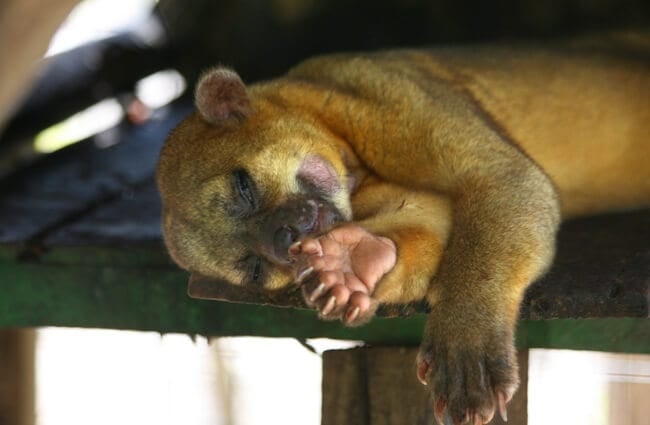
Basic Biology and Physical Characteristics
Kinkajous (Potos flavus) are members of the raccoon family (Procyonidae), exhibiting a slender body typically measuring between 1.5 to 2.5 feet in length, with a tail almost as long. Adults weigh between 3 to 7 pounds. Their fur is a rich golden brown, contributing to their “honey bear” nickname. A distinguishing feature is their prehensile tail, capable of gripping branches and aiding in arboreal locomotion. They possess partially hairless paws, providing enhanced grip, and retractable claws which are useful for climbing and manipulating objects.
Evolutionary History
The evolutionary lineage of the kinkajou traces back to the Procyonidae family, which includes raccoons, coatis, and ringtails. Fossil evidence suggests that kinkajous originated in the tropical regions of Central America and subsequently dispersed into South America. Their adaptation to an arboreal lifestyle and frugivorous diet has driven their unique morphological and behavioral traits. While not extensively studied, genetic research continues to refine our understanding of their evolutionary relationships within the Procyonidae family.
Habitat and Distribution
Kinkajous inhabit the tropical rainforests, dry forests, and plantations of Central and South America, ranging from southern Mexico to Brazil. They prefer dense, undisturbed forests with abundant fruiting trees. Kinkajous are primarily arboreal, spending most of their lives in the canopy, but will descend to the ground to access resources or travel between trees. They establish home ranges within the forest, often centered around fruit bearing trees. The availability of suitable habitat is a critical factor in their distribution, and deforestation poses a significant threat to their populations.

Diet and Foraging Behavior
Kinkajous are primarily frugivorous, with fruits comprising the majority of their diet. However, they are opportunistic feeders and also consume insects, nectar, flowers, and small vertebrates. Their long, extendable tongue, up to 5 inches in length, allows them to reach nectar and extract fruit pulp efficiently. They play a vital role in seed dispersal, consuming fruits and excreting seeds in different locations. Foraging occurs primarily at night, with kinkajous moving through the canopy in search of ripe fruits. They often visit flowering trees to consume nectar, contributing to pollination.
Nutritional Ecology
The nutritional ecology of the kinkajou is intricately linked to fruit availability. Different fruit species provide varying levels of essential nutrients, influencing the kinkajou’s health and reproductive success. They exhibit preferences for fruits with high sugar content and energy density. The consumption of insects and small vertebrates supplements their diet with protein and other essential nutrients. Seasonal changes in fruit availability influence their foraging patterns and home range use.
Social Behavior and Reproduction
Kinkajous are generally solitary animals, except during the breeding season. They communicate through vocalizations, scent marking, and tactile signals. Mating occurs throughout the year, with females typically giving birth to one or two offspring after a gestation period of approximately 75 to 80 days. Young kinkajous are dependent on their mother for several months, learning essential foraging and survival skills. They are born with closed eyes and ears, and remain closely attached to their mother’s belly or back. The mother provides milk and protects the young from predators.
Mating Systems and Parental Care
While often described as solitary, observations suggest kinkajous may exhibit flexible social behavior, occasionally forming loose associations with other individuals. Males may compete for access to females during the breeding season. Parental care is primarily provided by the mother, who nurses and protects the young until they are capable of independent foraging. The duration of maternal care influences the young’s survival rate and long‑term success.
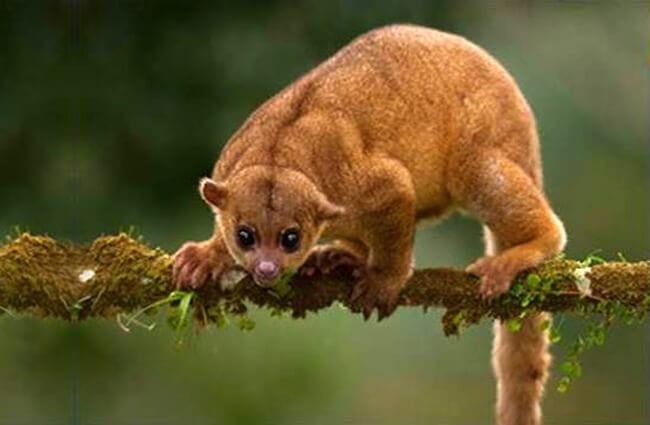
Ecological Role and Interactions
Kinkajous play an important role in the rainforest ecosystem. As frugivores, they contribute to seed dispersal, helping to maintain forest diversity. They also contribute to pollination by visiting flowering trees. Kinkajous interact with other animals in various ways. They may compete with other frugivores for resources, and serve as prey for larger predators such as jaguars, ocelots, and eagles. They also interact with humans, sometimes raiding crops or entering human settlements in search of food.
Trophic Interactions and Keystone Species Potential
Kinkajous’ role as seed dispersers and pollinators suggests they may function as keystone species in certain rainforest ecosystems. Their foraging activities influence the distribution and abundance of plant species, contributing to forest structure and composition. The loss of kinkajou populations could have cascading effects on the ecosystem, impacting plant reproduction and forest health.
Kinkajous and Humans
Historically, kinkajous were hunted for their meat and fur. Today, they are sometimes kept as pets, but their specialized dietary and behavioral needs make them difficult to care for in captivity. Habitat loss due to deforestation and agricultural expansion poses the greatest threat to kinkajou populations. Conservation efforts focused on protecting rainforest habitats are essential for ensuring their long‑term survival.
Conservation Status and Threats
The kinkajou is currently listed as Least Concern by the International Union for Conservation of Nature (IUCN). However, their populations are declining in some areas due to habitat loss, hunting, and the pet trade. Fragmentation of rainforest habitats isolates kinkajou populations, reducing genetic diversity and increasing their vulnerability to extinction. Effective conservation strategies require collaborative efforts between governments, conservation organizations, and local communities.
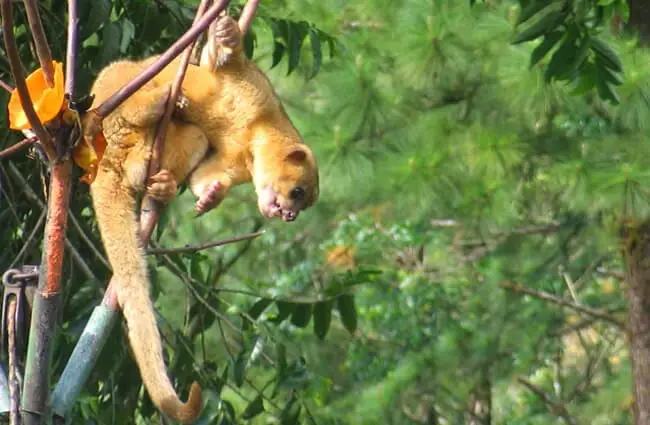
Encountering a Kinkajou in the Wild
If you are fortunate enough to encounter a kinkajou in the wild, observe it from a distance. Do not attempt to approach or feed it. Kinkajous are generally shy and will avoid human contact if possible. If the animal appears injured or distressed, contact local wildlife authorities for assistance. Remember that disturbing wildlife can have negative consequences for both the animal and yourself.
Caring for Kinkajous in Captivity
Zookeepers and wildlife rehabilitators caring for kinkajous must provide a specialized diet consisting of fruits, nectar, and insects. They require a spacious enclosure with climbing structures and enrichment items to stimulate their natural behaviors. Regular veterinary care is essential to monitor their health and prevent disease. It is important to remember that kinkajous are not domesticated animals and require experienced care to thrive in captivity.

Fascinating Kinkajou Facts
Beyond the basics, kinkajous possess some remarkable traits. Their tail acts as a fifth limb, providing exceptional balance and grip. They can rotate their hind feet 180 degrees, allowing them to descend trees headfirst. Kinkajous have a sweet tooth and are known to raid fruit orchards. They are excellent climbers and can navigate the rainforest canopy with remarkable agility. Their vocalizations include whistles, squeaks, and chattering sounds.
The kinkajou, with its unique adaptations and ecological role, remains a captivating subject for zoologists, conservationists, and nature enthusiasts alike. Protecting these remarkable animals and their rainforest habitats is crucial for maintaining the biodiversity of our planet.

![Red Angus Closeup of a beautiful Red Angus cowPhoto by: U.S. Department of Agriculture [pubic domain]https://creativecommons.org/licenses/by/2.0/](https://animals.net/wp-content/uploads/2020/03/Red-Angus-4-238x178.jpg)
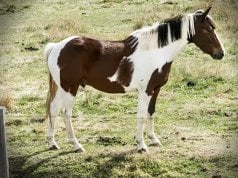
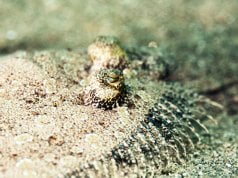
![Red Angus Closeup of a beautiful Red Angus cowPhoto by: U.S. Department of Agriculture [pubic domain]https://creativecommons.org/licenses/by/2.0/](https://animals.net/wp-content/uploads/2020/03/Red-Angus-4-100x75.jpg)

